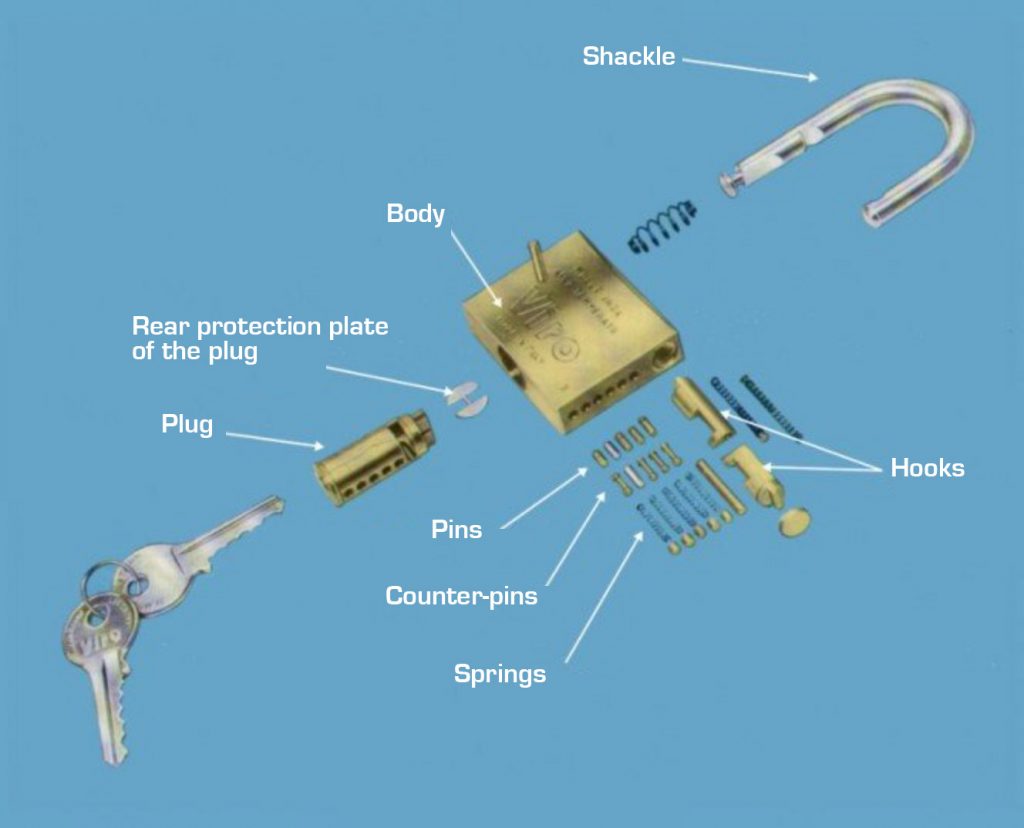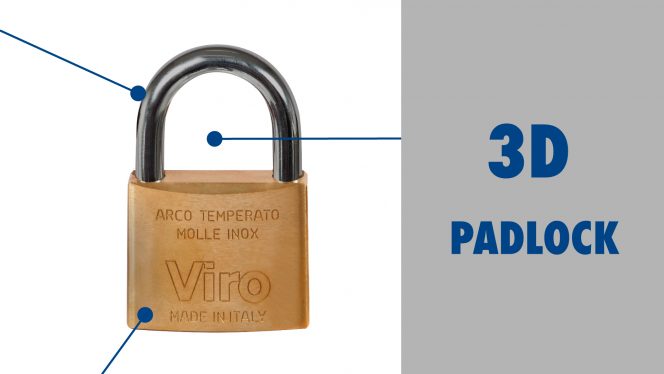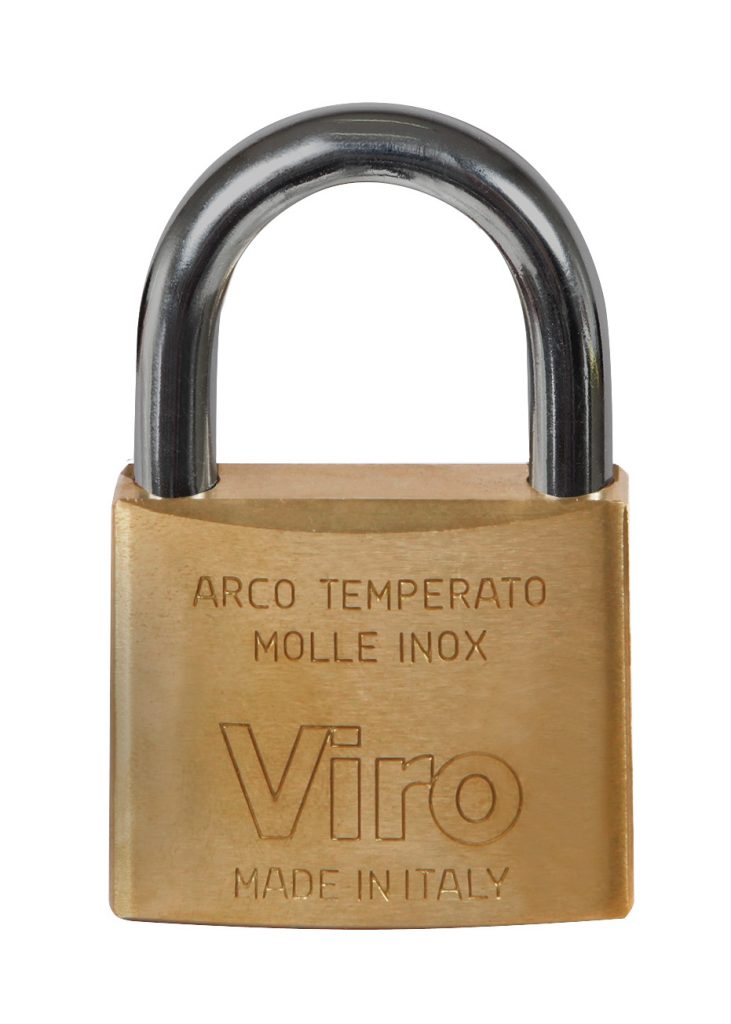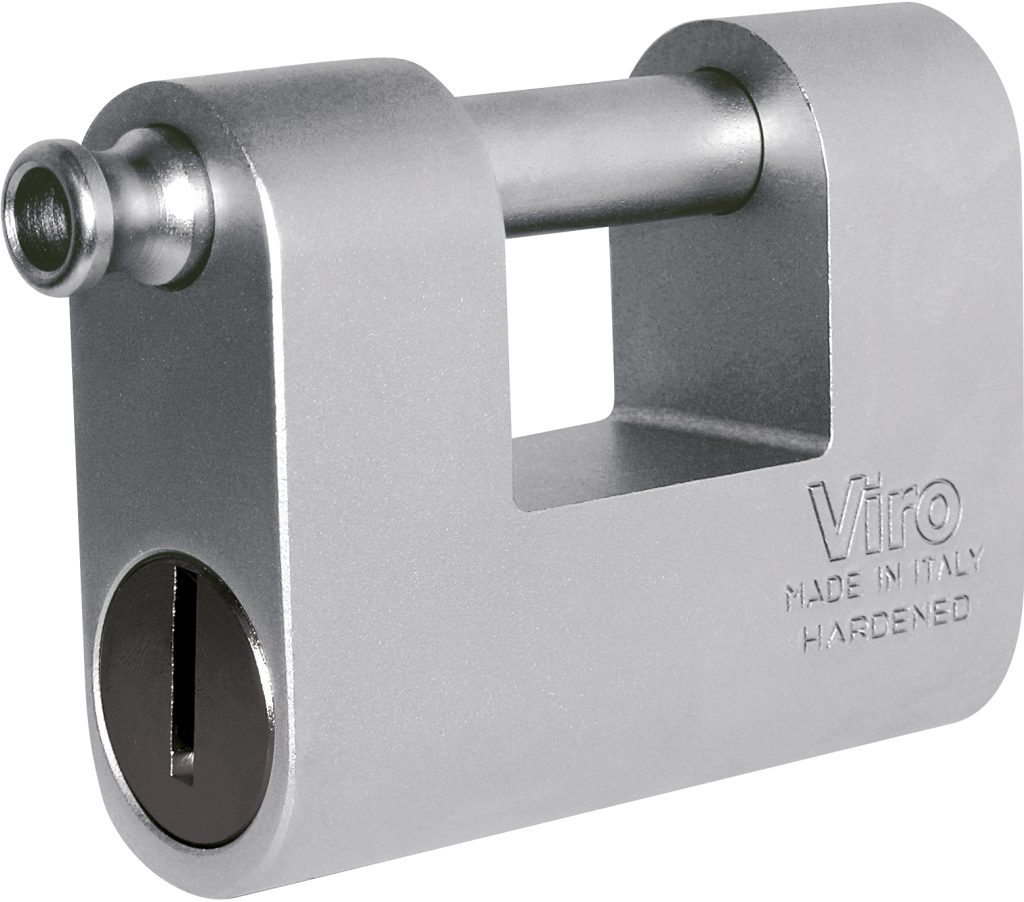There are many different shapes and sizes of padlocks on the market. But when it comes to choosing one, as well as looking at specific characteristics, such as the heat and chemical treatments they have undergone or the general strength of the product, it is important to consider which padlock, based on its size, can best meet your needs.
Let’s start with the “anatomy” of the padlock. Although the design may vary from model to model, the padlock, on the outside, consists of:
The dimensions to be checked will therefore be:
- The body of the padlock
- The diameter of the shackle/lock-bolt
- The clearance of the shackle/lock-bolt
1. The sizes of the body of a padlock
One obvious aspect is the size of the padlock body. Why is this important and what do different sizes mean?
For example, let’s look at a small key-operated padlock, a large key-operated padlock and a combination padlock.
If we were to dissect a traditional key-operated padlock, we would find inside, among other components, a plug and a certain number of pins.

For structural reasons, a small padlock can accommodate a smaller plug and consequently fewer pins than a larger padlock.
Considering that the fewer the number of pins, the easier it will be to force the padlock, if a very small padlock (e.g. 20 mm) were chosen, the number of possible combinations for that type of key (perhaps with only 3 pins) could be less than for a combination padlock.
Is a combination padlock always preferable? No. Only in cases where you have to opt for very small padlocks, such as, for example, to lock suitcases or handbags, or where convenience plays an important role at the expense of security, for example to close a locker in a gym. In other cases, a larger padlock with more pins may be the best option. Equally important is the size of the component representing the locking system of the padlock, especially its diameter.
2. The diameter of the shackle/lock-bolt of a padlock
For this reason, not only should the shackle/lock-rod of a padlock be chosen so that it is suitable for passing through the fixing points that the product will have to defend, but it should be borne in mind that it represents the most critical point against possible attacks by thieves.
In fact, for structural reasons it must be smaller than the body in which it is housed, thus being potentially more exposed to cutting/break-in attempts. This is why both the materials and the treatment carried out on this padlock component are important.
It should be stressed, however, that there is no “right” standard size regardless of application, just as it would be a mistake to claim that padlocks with short shackles are a priori more secure than those with long shackles, although this is often the case. Then how do we choose? The answer is simple, depending on the type of asset to be protected and ensuring that the potentially free space between the body of the padlock, the asset and the shackle is as small as possible.
Shackle and lock-rod have the same function. In the case of padlocks, generally armoured or one-piece, which have a lock-bolt instead of a shackle, the same attention should be paid to the diameter and quality of the materials as to the length of the lock-bolt.
3. The sizes of the shackle clearance/lock-bolt of a padlock
The “clearance” means the free space between the shackle/lock-bolt and the underlying body of the padlock. This means that the dimensions of the shackle or lock-bolt will be directly proportional to the clearance, which, if it is not of a suitable size for the fixing point, could leave a free space that can be used by thieves to introduce burglary tools.


